Standing Witness: The History is in the Soil at York River State Park
Another interesting article in our Park of the Month Series
It is most certainly entertaining to attend first-person history programs with all the pomp and circumstance of period costumes and affected accents. We do it all the time at York River State Park.But do you ever wonder where those characters and stories come from? Sure, they come from documents, deeds, and letters, but they also come from the soil.
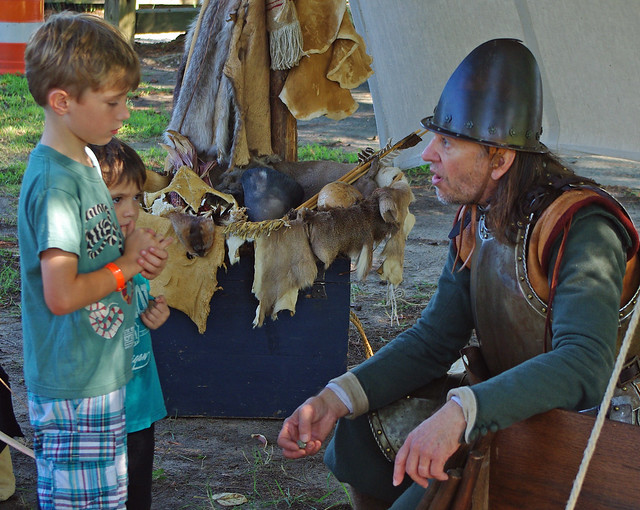
First-person costumed interpretive programs bring history to life at York River State Park
Soil. Dirt.Sand. Rocks.
These stories come from soilthat is painstakingly core-sampled, screened, viewed, sifted, given a second look, sifted again, and given a third look. Archaeology at York River State Park Archaeologist Jerry Travers likes it.
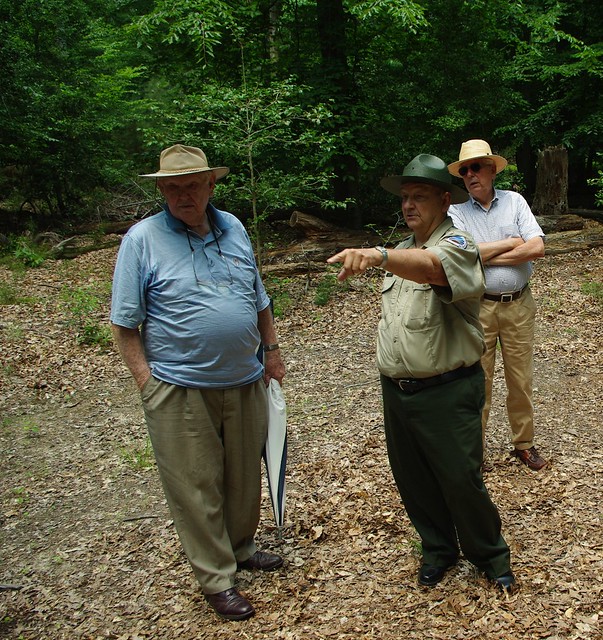
Jerry Travers points out the location of the wheelwright house to visitors on an archaeological tour
Slow and steady until….a glimmer of metal against a backdrop of centuries of rust, a stark white piece of pottery laid bare against the dark soil, or a certain feel of a horn button among clods of clay. That is what makes this type of history-sleuthing so worthwhile–finding clues and artifacts to the past.
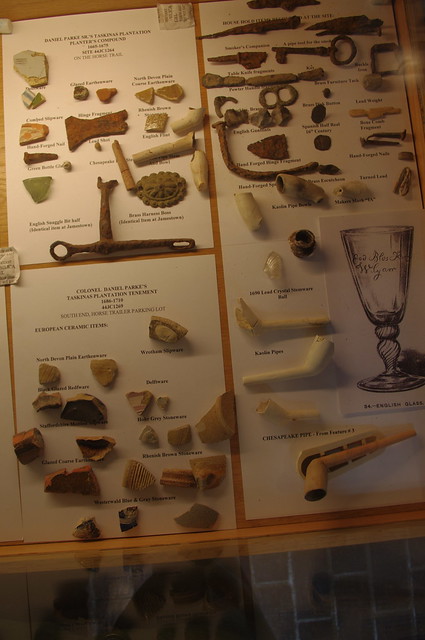
A variety of artifacts found in the park are on display in the Visitor Center at York River State Park
How does the park know that there was an antebellum plantation on park property?
We learn this by the types of brick uncovered during archaeological surveys cross referenced with historic deeds at the Library of Virginia.
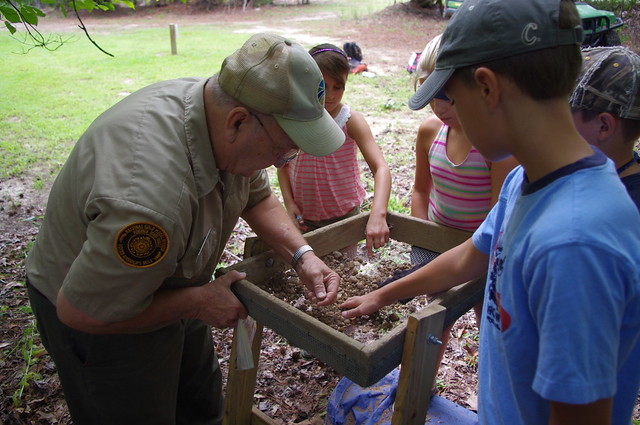
Jerry Travers teaches children how to use the soil screen to look for artifacts and clues to the past
How does the park know that Eastern Woodland Indians of the Powhatan Federation traded with colonists at Moody's Wharf?
By finding a mix of Virginia Indian clay pipes and colonial era beads and buttons near the wharf site.
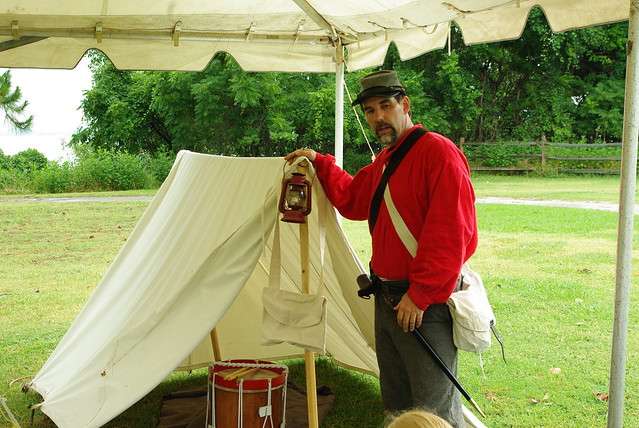
Chief Ranger Brad Thomas sets up a replica civil war soldier encampment
How does the park surmise that Union or Confederate cavalry rode by?
By finding parts of spurs with a design particular to the civil war era and cross-referenced with old tin typephotographs of civil war cavalry.
What do these archaeological finds do for us?
These types of archaeological finds help the park create the characters and stories that you'll meet at events like Estuaries Day on August 22, 2015 and Ghost History Trail Rides in the month of October in 2015. These archaeological findshelp the park staffinterpret the area's history for youthrough programs like fossil walks, colonial children's games, and trail side signage.
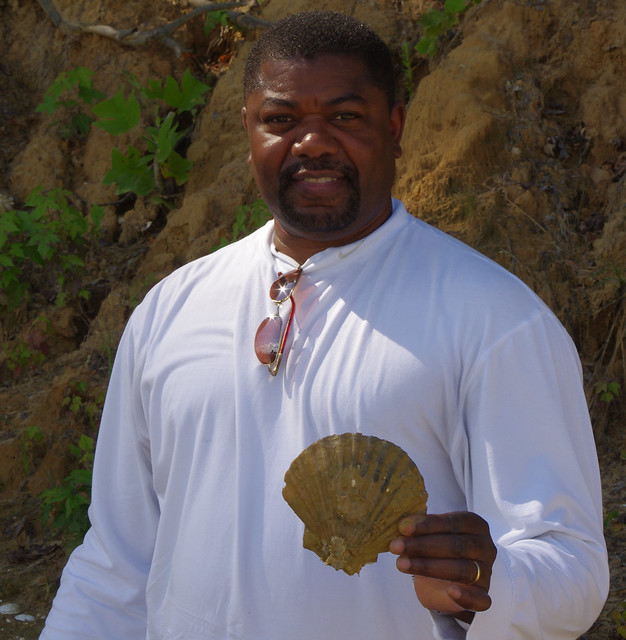
Did you know that Jeffersonian scallops are the state fossil of Virginia? During York River State Park fossil walks you can find large ones like this visitor found on the shore of the river.
On the other end of the historical spectrum is the park's abundance of fossils along the river beds. Once part of a vast ocean bed, the area's shoreline isa wealth of fossilized information from macro invertebrates to themastodon discovery in nearby York County.
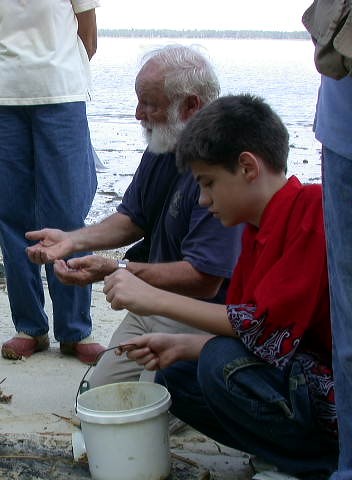
Dr. Johnson explains the ancient geologic history of the park and the river bed during a fossil walk. Millions of years ago, the entire area was a giant maritime sea bed.
The park works withvolunteer and retiredChesapeake Bay approximately 35 million years ago.

Usually set up at the Estuaries Day event in August of each year, Dr. Johnson shows off his fossil collection that includes mastodon teeth and bones. It is thrilling to hold something so ancient in your hands.
In the spring, summer, and fall, York River State Park offers great history programs and fossil walks.
Click Virginia State Parks.
As they say…the proof is in the pudding…or rather the history is in the soil.
But let me remind you of one last thing. Permits are required for any digging, plant or artifact collection. Many of the archaeological sites are returned to their natural state so that "treasure hunters" do not disturb the areas.
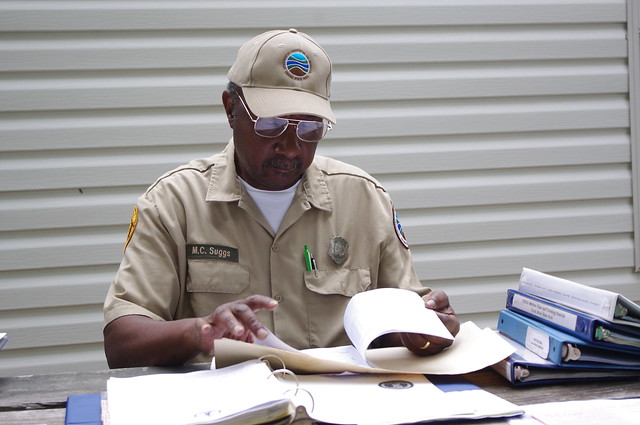
Our Park Rangers takes their jobs very seriously. Please join a scheduled fossil or archaeology program and do not go treasure hunting on your own.
Virginia Department of Historic Resources.Anyone caught attempting to dig, disturb or collect artifacts and/or fossils could face criminal charges.
Be mindful of these rules and remember to take only photographs and leave only footprints on your journey into the past at York River State Park.See you at the park!
